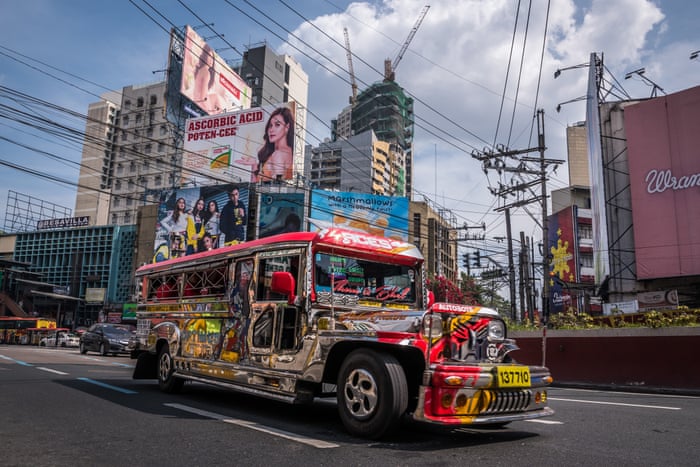Effective Transit Advertising Philippines to Grow Your Target market
Effective Transit Advertising Philippines to Grow Your Target market
Blog Article
How Transit Marketing Can Change Public Transport Spaces Into Dynamic Advertising Operatings Systems
Transportation advertising holds significant possibility to redefine public transport rooms into dynamic advertising platforms that involve and educate. By using ingenious styles such as interactive booths and electronic display screens, brand names can not just reach a diverse audience but also enhance the total commuter experience. This strategy develops an one-of-a-kind opportunity for brand names to link with consumers in a setting that is usually ignored. As we discover the complex advantages and progressing techniques of transportation advertising, it raises the question of just how this change could redefine our communications with both brand names and the metropolitan environment.
Benefits of Transportation Advertising

Furthermore, transportation advertising is extremely affordable compared to conventional media. It allows marketers to attain high impacts at lower costs, optimizing return on financial investment. The captive audience of travelers offers an opportunity for brands to share their messages to individuals that are often receptive during their travel times.
Furthermore, the vibrant nature of transportation marketing allows campaigns to be updated regularly, making certain that messaging continues to be pertinent and timely. This versatility can be vital in reacting to market fads or advertising events, maintaining the brand top-of-mind for consumers. Lastly, the pervasive existence of transportation advertising and marketing adds to brand name recall; repeated direct exposure within acquainted travel contexts enhances brand recognition and promotes customer commitment, inevitably enhancing and driving sales brand track record.
Sorts Of Transit Marketing
Public transportation systems offer numerous styles for advertising and marketing, each accommodating various advertising and marketing methods and target market engagement techniques. One noticeable type is external bus and train covers, which cover the whole automobile and produce a mobile billboard impact, permitting high exposure in metropolitan environments. These wraps can record interest as they go across busy streets, getting to a varied target market.
Another prominent format is indoor marketing, which includes posters, digital displays, and advertisements on transportation seats. These placements engage guests throughout their trip, reinforcing brand name messaging in a constrained space. Digital displays, particularly, supply the advantage of vibrant content, making it possible for advertisers to upgrade messages in real-time.
Station advertising is likewise significant, featuring posters, banners, and interactive booths within transportation stations. These ads take advantage of foot traffic and can target particular demographics based on area.
Lastly, marketing partnerships with transportation authorities can lead to special campaigns, such as themed transportation experiences or occasions, boosting the general engagement with travelers. Each kind of transportation advertising supplies unique benefits, allowing brands to tailor their method to properly reach their target market within the general public transport environment.
Involving Commuters Properly
Travelers are significantly flooded with advertising messages during their daily travels, making it important for brands to engage them in ingenious methods. To capture interest in this jampacked space, advertisers should prioritize creativity and significance. Using attractive see here now visuals and succinct messaging can considerably boost the likelihood of involvement.
Interactive aspects, such as QR codes or enhanced truth functions, can likewise transform fixed advertisements right into immersive experiences, promoting a deeper link with the audience. Brands should concentrate on resolving commuters' needs and interests, customizing messages to resonate with their way of living, whether with promotions for local companies or services designed to boost their commuting experience.
In addition, timing plays a vital function; purposefully positioning advertisements throughout optimal travelling hours can make the most of exposure and influence. Involving commuters effectively additionally includes leveraging social media sites integration, permitting guests to share their experiences or promos straight from transportation platforms, therefore intensifying brand name reach.
Basically, reliable involvement hinges on understanding the commuter journey and developing engaging, interactive, and appropriate marketing experiences that not just capture focus however also drive action and commitment. By doing so, brand names can change mass transit right into a dynamic marketing platform that reverberates with its target market.

Measuring Advertising And Marketing Influence
Just how can brand names properly evaluate the efficiency of their ad campaign in transportation environments? Measuring the effect of transportation advertising and marketing calls for a complex strategy that combines quantitative and qualitative metrics. One widespread method is tracking involvement via mobile analytics, where brands can examine foot traffic patterns and application communications previously, during, and after projects.
Studies can give beneficial insights into brand recall and customer view, allowing brands to evaluate exactly how well their messages reverberate with commuters. In addition, monitoring social media sites involvement related to details campaigns can disclose shifts in public assumption and brand name conversation.

Moreover, teaming up with transit firms can improve dimension accuracy, as they usually have comprehensive group data on ridership patterns. By integrating these methods, brand names can establish a detailed understanding of their advertising and marketing effectiveness, ensuring that their campaigns not only reach yet also affect their target market successfully.
Future Patterns in Transportation Marketing
A considerable shift is expected en route advertising and marketing as technological innovations and altering customer habits improve the landscape. Transit Advertising Philippines. The combination of interactive media and digital screens is anticipated to enhance involvement, permitting brand names to deliver dynamic material that resonates with diverse target markets. As public transport systems embrace clever modern technology, marketers will certainly take advantage of real-time information analytics to tailor messages based upon traveler demographics and habits
Furthermore, increased truth (AR) is poised to revolutionize the method commuters interact with promotions. By giving immersive experiences, AR can transform a mundane trip into an interesting story that records focus and promotes brand commitment. This technology will likely urge marketers to produce even more experiential campaigns that drive customer interaction.
Sustainability is one more important trend affecting transit advertising and marketing. As environmental awareness expands, brands will significantly look Go Here for to line up with environmentally friendly methods, utilizing sustainable products and advertising eco-friendly initiatives within their campaigns.
Final Thought
In final thought, transit marketing provides substantial benefits by enhancing brand name exposure and engaging a captive audience. As trends advance, the Get More Information potential for ingenious interactions between brands and commuters is positioned to expand, ensuring that transit advertising and marketing remains an essential component of modern advertising and marketing strategies.
Transit marketing holds considerable potential to redefine public transportation areas right into vibrant advertising systems that engage and educate. The pervasive existence of transportation advertising and marketing contributes to brand recall; duplicated exposure within acquainted travel contexts enhances brand name awareness and cultivates customer loyalty, inevitably enhancing and driving sales brand credibility.
Just how can brand names accurately examine the performance of their advertising and marketing campaigns in transit environments?In conclusion, transit marketing offers significant benefits by improving brand name presence and engaging a restricted audience. Transit Advertising Philippines. As trends develop, the possibility for ingenious communications between commuters and brand names is positioned to grow, guaranteeing that transit advertising and marketing continues to be a crucial part of contemporary advertising and marketing methods
Report this page